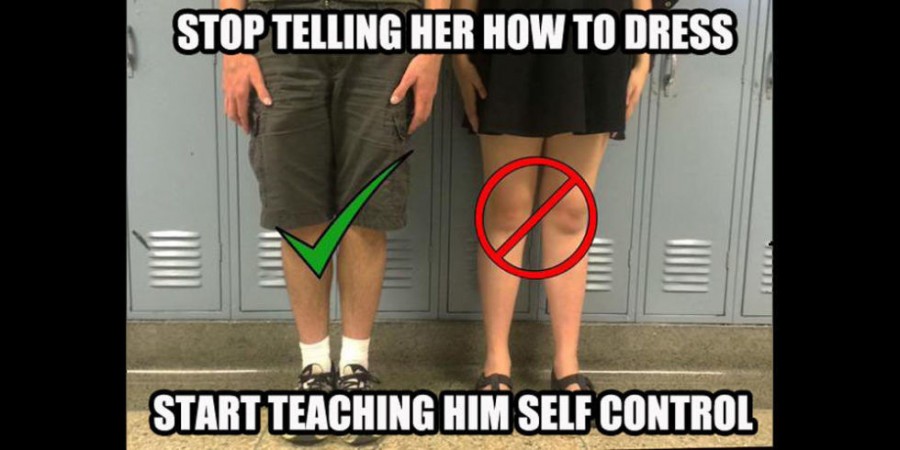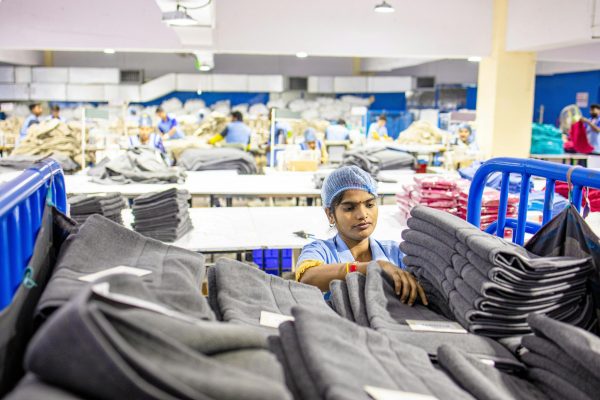Why We Should Get Rid of the Dress Code
Self expression is a crucial part in an adolescent’s development, especially in a place where one grows from a young teen to an adult.Without self expression, a person can’t experiment and go through their own self-discovery.
At Nashoba, self-expression is stifled in many ways. Not only does it target young girls but it also reinforces a violent ideology of the dress code. In the dress code, more than a third of the listed restrictions directly target girls while only one specifically mentions a male-related issue. It prohibits anything that is deemed “disruptive to the learning environment” such as “clothing which exposes midriffs, buttocks and/or backs, clothing with low necklines that expose cleavage, clothing that is ripped, transparent or reveals undergarments.” They also require that “tank tops must have a one inch strap; no strapless dresses/tops, shorts, skirts, and dresses must be mid-thigh in length and cannot be excessively form fitting”. Every single one of the aforementioned restrictions is directly aimed at girls’ clothing; some of which isn’t even common for girls to wear.
Acton-Boxborough High School, for example, has a policy which actively respects its students and treats them as responsible people who can make decisions on their clothing. The code at Nashoba implies that the students need to dress and act a certain way to be taken seriously. Acton-Boxborough’s dress code states that “The Fourteenth Amendment protects your right to choose hair length, clothing, and other aspects of your appearance. The school cannot interfere with this right by punishing you or restricting you from any school activities because of your appearance unless there is an overriding, legitimate school purpose, which the school can show to be more important than this right.”
Roughly, a fourth of the students at Nashoba are going off to college next year and a significant amount of them are already legal adults, yet they still have to follow a set of degrading and impractical rules. Respect is not a one way street. Rape culture is perpetuated by the way that the code is written and the idea that it desensitizes the student body. This term is defined as “a complex set of beliefs that encourage male sexual aggression and support violence against women.” Although, the school wants to protect females against male sexual aggression and violence, it may be too extreme. It’s not necessarily what the rules say in print but the ideas behind them and the way that they are executed.
The dress code at Nashoba hypersexualizes the adolescent female population while simultaneously reinforcing the ideology that it is a girl’s fault for a male’s misbehavior. Why is it the job of the school administration to control how a girl perceives her body? Why do they have the authority to dictate how others perceive her according to her clothes?
It’s different for the male population of Nashoba. They can get away with wearing virtually whatever they want, without losing class time to be sent down to the nurse’s office, and without being objectified in front of their peers against their will. But because so many boys will never be truly penalized for what they wear, they don’t believe the dress code is a problem.
When a girl brings up the double standards that we face, there are always boys who deny the issue and dismiss first-hand experience. They continue the stigma against women’s bodies, invalidating their arguments and denying that this is a substantial issue. The dress code is not meant to protect girls. It is not for young women, but for the sake of the boys attending this school.
Thighs will not lower test scores, but a female student missing out on an important lesson to go to the nurse’s office will. A bra strap is not a secret, and anyone with an ounce of self control won’t lose their mind over the pieces of cloth being less than 2 inches on a girl’s shoulders . The dress code revokes a girl’s right to her body by forcing her to cater to boy’s “uncontrollable hormones” while simultaneously shaming her for wearing something that makes her feel confident in her skin. She owes these boys nothing; her body is her own property and no one has the right to take that away.











